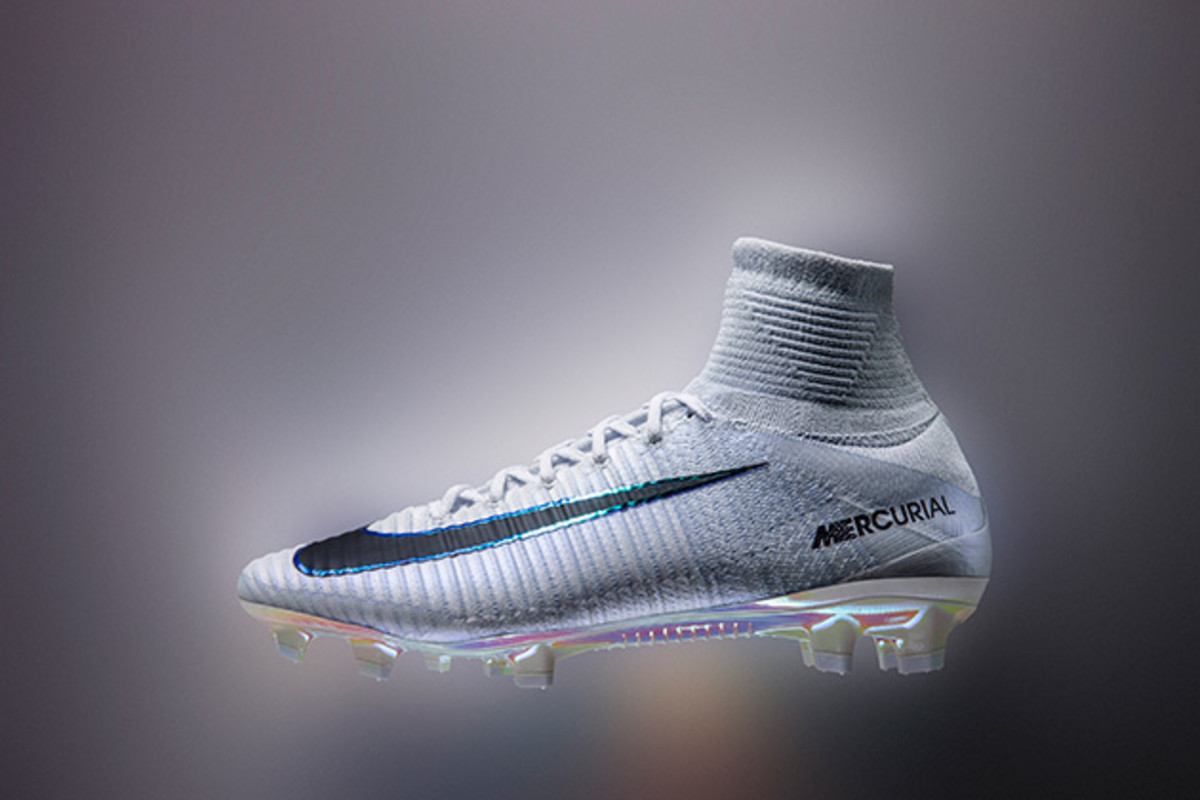Nike’s lead designer talks soccer cleats and technology ahead of Rio

Footwear designers rarely find the direct correlation between their craft and their sport as strong as in soccer. “The boot is the tool you play the game in,” Nathan VanHook, Nike’s soccer design director, tells SI.com.
From traction on differing surfaces, performance issues from foot-to-turf and foot-to-ball and even the “adventurous style” that soccer players have pioneered for decades, VanHook sees creating a soccer cleat as a “great blend of performance at the highest level” while the power of design—and its worldwide reach—isn’t lost on the designer who has worked in Nike’s Sportswear and men’s training divisions.
The job, then, VanHook says, comes in blending art and science, finding the data to lead performance and then derive a style based on the cleat’s function. “Every single thing we do, we have a purpose for,” he says. “We are designing for the body in motion.”
Tech Bit: Zepp builds advanced smart bat for MLB superstar Mike Trout
Let’s take Nike’s new Anti-Clog Traction technology, debuted along with a litany of other Olympics-related technologies as Nike plans for Rio this summer. With an entire team of Nike Football Footwear folks working on new technology, the goal was to prevent mud from clogging the sole plate of cleats, a two-year project that had them investigating all things materials, science, engineering and chemistry.
The new sole plate now includes an adaptive polymer that actually embraces water, instead of trying to repel it. “We stopped thinking about repelling water and started thinking about using it to our advantage to create a lubricious layer, without sacrificing traction,” says Dr. Jeremy Walker, part of the team behind the technology. “Understanding the molecular structure of mud was key to developing a hydrophilic solution, which helps keep mud from clogging the plate.”
The new plate will get added to “special versions” of the Tiempo, Magista and Hypervenom models well before the Rio Olympics.
With a strong mix of the world’s elite players donning Nike boots, VanHook says finding designs void of distraction allows players to play without wasting time with their gear. To get there, Nike has brought some of its newest technologies to its soccer line in recent years, form the Flywire cables, the Flyknit cuff and lunarlon cushioning (in street performance).

VanHook, who was originally an architecture student who soon realized the options for creativity in construction ranged from art to furniture, still indulges in his love of architecture, but not as much as his fascination with art, even if that part of his life doesn’t directly influence his shoe design. “They are separate, but the process is very similar,” he says. “In footwear, you start at a basis and you are adding layers and subtracting layers. In art you start at a basis and are setting up for a common vision. It is the same when you do footwear, you think about the whole line and having something for everybody.”
But as the game of soccer changes, so does the way VanHook designs. “The speed of the game is crazy now,” he says. “Seeing how athletes train is so amazing. The dedication. And the football team as a whole, they are still relatively together as an entire unit. The whole system, everything has to act together really well.”
Tech Talk: Under Armour steps out with first 3D-printed training shoe
That’s why Nike’s latest cleat—the new Mercurial, unveiled as part of Nike’s focus on the Rio Olympics—puts a premium on speed and minimizing distractions. A new anatomical sole plate uses a foot contour map to eliminate the gap that previously existed underfoot, cradling the foot and reducing pressure-point irritations and unwanted movement inside the shoe.
A new vacuum-forming process for creating the plate allowed Nike to hollow it out and make it 40% lighter than the carbon fiber plate it replaces. Along with the new plate came testing on stud shapes, resulting in a mix of studs that act like claws when accelerating but have the surface needed to help with braking.
For the Mercurial’s new upper, Nike adapted Flyknit with a 3D texture. The raised surface—with a base thickness of 1 millimeter, increasing to 2.5 millimeters in the forefoot—was designed to create friction between the cleat and the ball.
As VanHook looks to the future of soccer, with its speed and constantly unified movements on the field, his design touches have a link to everything he’s once designed. “Anything you’ve done in the past, your previous work, it takes you back to a good time and what you learned and what you didn’t learn,” he says.
Whether mud, Rio, speed or the next World Cup, VanHook must put his focus on the pitch and the connection between the player's foot and the game.
Tim Newcomb covers sports aesthetics—stadiums, sneakers, uniforms and more—for Sports Illustrated. Follow him on Twitter at @tdnewcomb.
